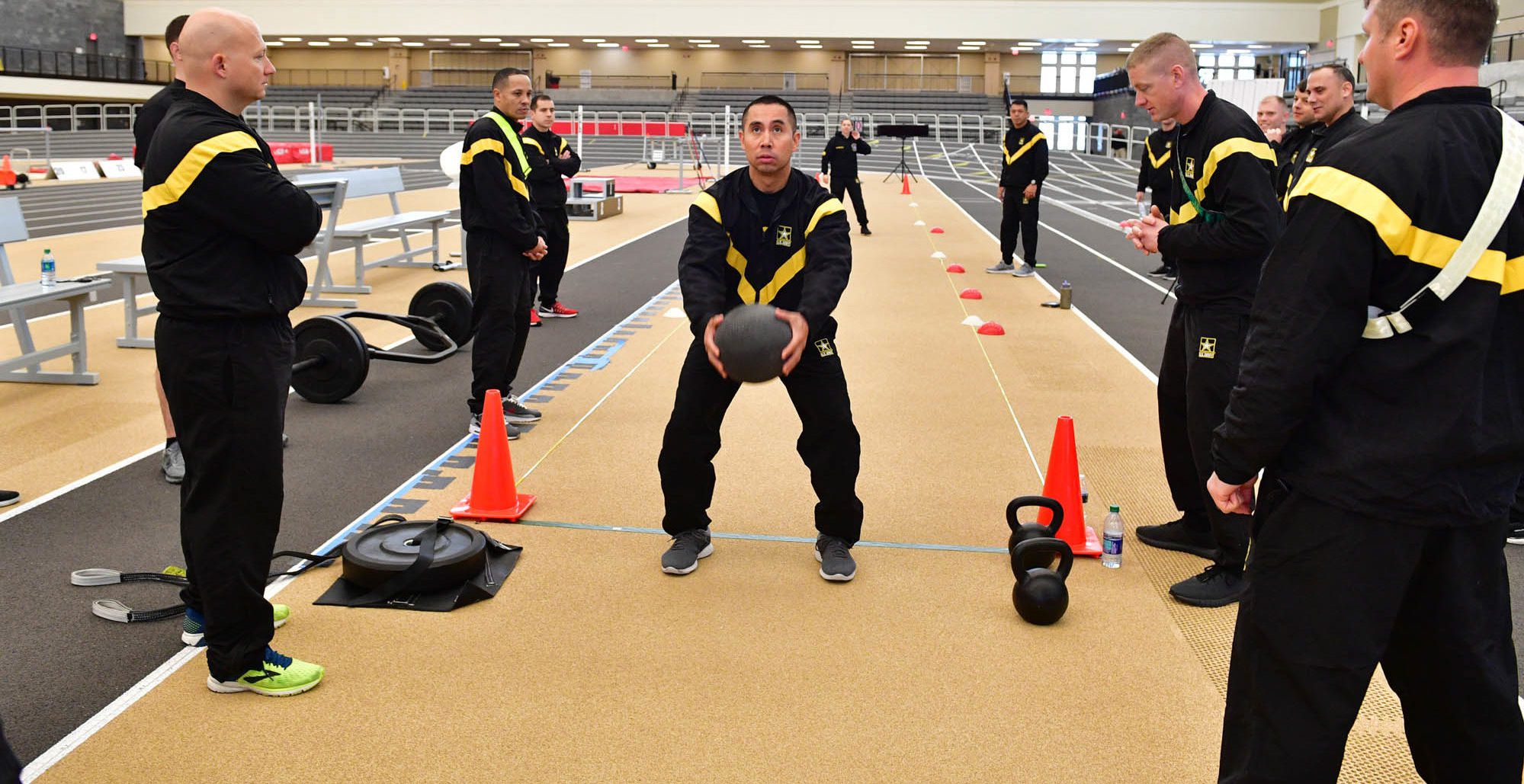VMI Hosts Army Combat Fitness Test Trials

Participants learn the standing power throw, in which they throw a 10-pound medicine ball as far as possible behind them. VMI photo by H. Lockwood McLaughlin.

Participants learn the standing power throw, in which they throw a 10-pound medicine ball as far as possible behind them. VMI photo by H. Lockwood McLaughlin.
On Dec. 13-14, 2018, approximately 50 representatives from all the ROTC brigades across the country descended upon VMI to learn the details of what will soon become the Army’s standard for evaluating soldier physical fitness.
For close to 40 years, the Army Physical Fitness Test has essentially been the same. Since 1980, the requirements set forth by the Army to test strength and endurance has consisted of three parts: Push-ups, sit-ups and a two-mile run.
Depending on one’s age group and sex, parameters are set to determine passing and maximum scores for each of the three tests. For push-ups and sit-ups, participants are given two minutes for each challenge and the two-mile run is timed on a flat track.
In recent years, however, there have been moves to update that test to better reflect the physical fitness needed by a soldier in combat. That initiative has resulted in a new standard: The Army Combat Fitness Test.
“I think the number one goal is to find a better assessment of the combat readiness of a soldier,” said Maj. (promotable) Brandon Lindsey ’02, VMI Army ROTC instructor and National Guard liaison.
As one of the final parts of the refining process before making the ACFT official, the Army has chosen select test groups from a wide range of units within its structure. This includes everyone in the Army – from Special Forces and administrative units to Army ROTC units. In December, VMI had the chance to play an important role in fielding the new test.
“We’re the only ROTC unit in the nation to be picked,” said Lindsey. “VMI hosted it since we had the most cadre and we were initially the main focus for the training.”
Approximately 50 representatives from all the brigades within Cadet Command from across the country came to VMI to learn and experience the new six-part test.
“We were able to learn how those six events are done,” said Lindsey. “… how to set it up to standard, how to administer it, how to grade each event. And then also on top of that, we took it ourselves to know how to take it.”
The six events include deadlifts, a standing power throw, pushups, a sprint-drag-carry exercise, leg tucks and a two-mile run. Each part has parameters and guidelines for proper execution.
“This will be the test for record in some fashion or form,” added Lindsey. “The Army’s looking at our results and the way we did it to help shape how they roll this thing out next year.”
Along with its large Army ROTC presence, VMI also happened to be particularly well suited to host a training session because of the facilities available. The training session was originally planned to be held outside, but the weather pushed the exercises indoors to the Corps Physical Training Facility.
“It has training rooms and plenty of seating and just everything we needed,” Lindsey said.
This spring, the Army department will administer the new test to VMI’s Army ROTC cadets and the results will be a part of the evaluation process towards making the new test official. For those cadets though, the old three-part APFT remains the official test of record.
“This spring and this fall are going to be an exciting time,” added Lindsey.